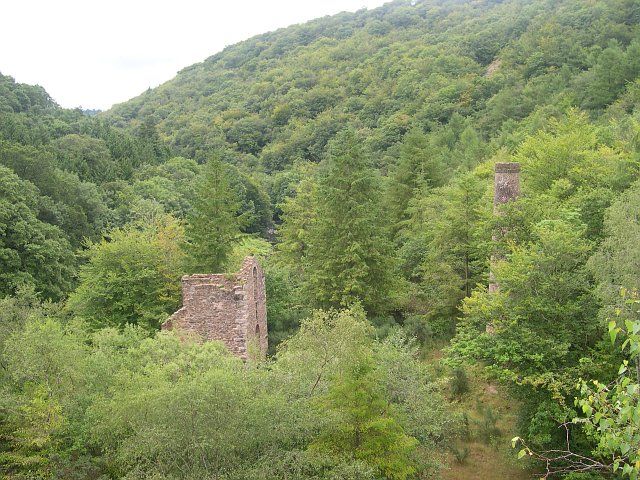South Hooe Mine, situated on the north side of the River Tamar, was notable for its rich silver and lead ores. The mine’s ores were smelted at Weir Quay, where furnaces handled up to 300 tons per month, yielding an average of around 60 ounces of silver per ton. The workings were extensive, with the main engine shaft sunk to 250 fathoms on a 15-degree east underlie. The 160 and 175 fathom levels were the most productive, extending approximately 470 fathoms southward. The lode dipped southward, and workings reached about a quarter-mile beneath the river. An inclined shaft of 25 degrees connected the 13 and 115 fathom levels, and Spurgin’s shaft, sunk to 175 fathoms, was fitted with an underground hauling engine.
Today, traces of galena, fluorite, and pyrite can still be found among the spoil heaps along the riverbank, though only in small fragments mixed with pebbles and mud.
Often operated in conjunction with North Hooe Mine under the joint name Tamar Consols, playing a prominent role in early 19th-century mining. Around 1820–1821, it briefly collaborated with South Tamar Consols and Tamar Valley Mine under the collective title Bere Alston Mines. In the early 1800s, the mine’s silver yield was remarkable—reaching up to 180 ounces per ton, with lead assays of around 60%. Between 1814 and 1815, the mine produced 3 tons of silver.
A merger in 1820 united South Hooe with South Tamar as South Tamar Consols, though by 1821 the concern was sold off. Operations resumed in 1835 under the new name Tamar Silver-Lead Mine, which showed renewed promise. However, tragedy struck in 1851 when fumes from the underground hauling engine overcame workers in old workings, resulting in fatalities.
From 1845 to 1876, Tamar Silver-Lead Mine and Tamar Consols together produced approximately 14,640 tons of 62% lead ore and 326,300 ounces of silver. Later, between 1879 and 1882, about 780 tons of fluorspar were raised. Despite improving silver returns with depth, operations finally ceased in 1885, when workings had reached 250 fathoms below adit level.
Publications (1)
- (1920); BGS - Mineral Resources of GB (c1920s) Vols XIV, XV, XVI, XVII, XVIII - Fireclay; Arsenic & Antimony Ores; Refactory Materials, Lead & Zinc of Scotland, Rock-Salt and Brine (5 books); 777 pages
















